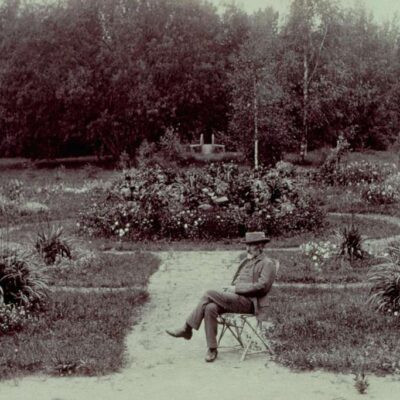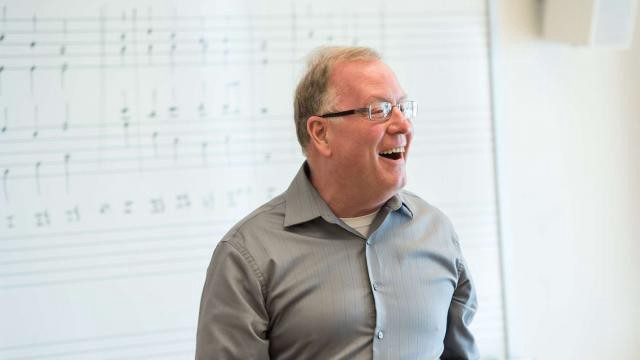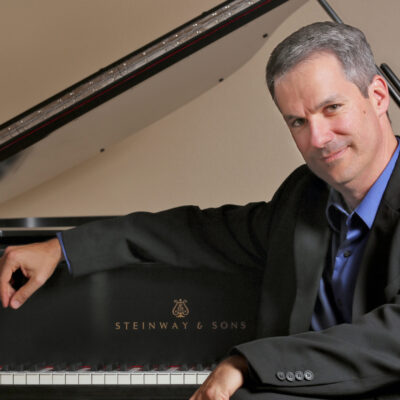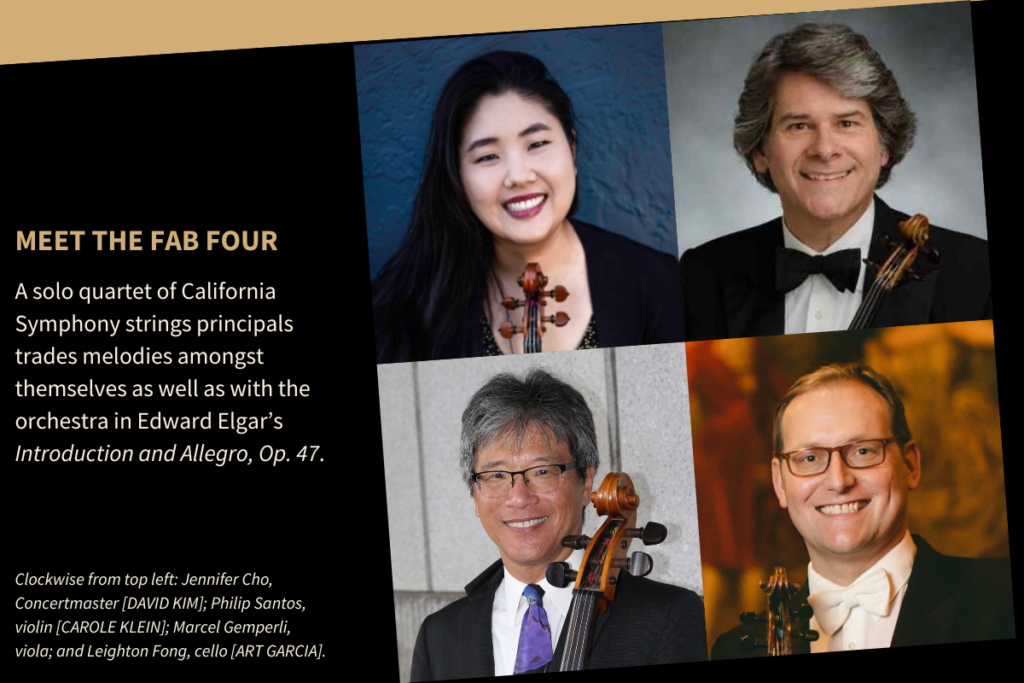
PRINCIPALS JENNIFER CHO (CONCERTMASTER), PHILIP SANTOS (VIOLIN), MARCEL GEMPERLI (VIOLA) AND LEIGHTON FONG (CELLO) TAKE PROMINENT ROLES IN ELGAR’S INTRODUCTION AND ALLEGRO, A WORK THAT HARKS BACK TO THE CONCERTO GROSSO* FORMAT OF THE BAROQUE ERA.
WE CAUGHT UP WITH THIS AWESOME FOURSOME AS THEY PREPARE FOR A PROGRAM THAT CELEBRATES THE MELODIC HEART AND SOUL OF THE ORCHESTRA: THE STRING SECTION.
*Concerto Grosso: a form of baroque music in which the musical material is passed between a small group of soloists and the full orchestra. This is in contrast to the solo concerto which features a single solo instrument with the melody line, accompanied by the orchestra.
For the upcoming performance of Elgar’s Introduction and Allegro, you aren’t soloists, but you’re not really a quartet either. How do you prepare to play something like that, and can you talk a little about what our audience can expect?
Jenny: This kind of instrumentation can have such an amazing variety for musical conversation. I wish there was a larger repertoire for it! Elgar really explores how many different colors can be produced within a string orchestra.
Philip: I would prepare the same as I would for any performance, whether it be solo, chamber music or full orchestra: practice, practice, practice. The audience will realize that sometimes they will hear singular, individual violin, viola or cello voices come out of the overall texture of the tutti strings, or complete string sections, like a Baroque Concerto Grosso. That, I am sure, will be very interesting for the audience to listen for.
Marcel: The Elgar is a complex piece, and the principal strings have a unique position as they go between two distinct roles. At times, we play as if we are part of the large string ensemble, but in others we are individual voices playing as a string quartet. The key to my preparation is understanding these roles, and exploring how the string quartet relates to the larger orchestra. When the quartet speaks out, are we embellishing a musical thought, or are we providing something in opposition? Are we responding to the orchestra, or having a separate conversation with the audience? The audience will ultimately enjoy it as a musical adventure with many moving parts.
Leighton: It is like eavesdropping on a good conversation. The dialogue between the orchestra and the string quartet will be fascinating.
For ALL THINGS STRINGS, Music Director Donato Cabrera has created a program that showcases the strings. What are the highlights of this program for you?
Jenny: I am looking forward to the whole program, but am especially excited for the Elgar and Bacewicz. My role in the Elgar explores the wonderful dichotomy between creating soaring and beautiful melodies while being very quick on my feet with the constant role changes. It’s fun!
Philip: The Dvorak Serenade is a wonderful piece with rustic charm and rich string sonorities, as is the Elgar, of course with the twist of having solo voices come out of the texture. I don’t know and have never played the Bacewicz or the Finzi, but I’m sure they will be interesting, as Maestro Cabrera has a talent of choosing audience stimulating repertoire.
Marcel: This program is a wonderful mixture of repertoire that shows off the versatility of string ensembles. The Dvorak is a masterpiece and the Elgar is a gem, but I’m very excited to learn the Bacewicz as I’ve never played it before. Collaborating with pianist Liz Dorman will also be a treat when we perform the rarely heard and beautiful Eclogue.
Leighton: Like all CSO programs that our music director has created, he pushes, challenges and inspires to be more creative musicians. It is not easy or comfortable, but it is exciting. I appreciate that. This entire program is no different.
The orchestra recently added nine new strings players. How has it been, adding such a large influx of new musicians to the ensemble?
Philip: Well, since we have had just two performances together, so far so good. It is always good to have consistency in personnel, it can congeal the sound the sections produce.
Marcel: The process of selecting and incorporating new and talented musicians into an existing orchestra can be more complicated than it may seem. We already know they are wonderful players from the audition process, but the real fun is having them join the orchestra and playing together as an ensemble. I’m thrilled about the new members of the orchestra, and playing with three new members of the viola section in September was inspiring. They are wonderful people and true team players, and I look forward to their ongoing contributions as part of the California Symphony family!
The four of you are usually to be found leading your sections in large scale orchestral works with the California Symphony, but you do have experience of playing together as a string quartet, in the “It’s a Cello-bration” episode of our 2020 virtual concert series. Can you speak a little about what you remember from that experience?
Jenny: That experience is still a very vivid memory for me. It was a rare moment of musical collaboration during that period. Even while getting used to the masks and distance, I remember how joyous it felt to hear our combined sound fill the beautiful church.
Philip: It was both challenging and rewarding. The recording process is always a challenge, especially with masks on and social distancing. The Samuel Coleridge-Taylor is a wonderful piece, which I had performed before in it’s entirety, so that helped. The Higdon arrangement of Amazing Grace was also very interesting and lovely.
Marcel: Having the opportunity to work with my principal colleagues in a quartet in 2020, (despite the masks and distancing required) was a wonderful musical experience during a challenging time. Playing in this intimate chamber music setting encouraged us to collaborate, making musical decisions in the Samuel Coleridge-Taylor pieces that reflected our personal voices within the whole. I especially remember working on Jennifer Higdon’s beautiful arrangement of Amazing Grace (link below) with Jenny, Phil, and Leighton and feeling like we could really explore each others’ tone colors and ideas of creating a unified quartet sound.
Leighton: I have vivid memories of that 2020 virtual concert program. First off , the filming of that quartet music was quite a challenge. None of us were comfortable playing with masks for many hours, unlike now. The physical distancing made it very difficult to hear. And all of those cameras….. I hope we never have to return to those circumstances again.
However, participating in that zoom session was amazing. Hearing Joshua Roman play that fantastic solo cello program, and then talk about the humanity of playing music- you can’t beat that.
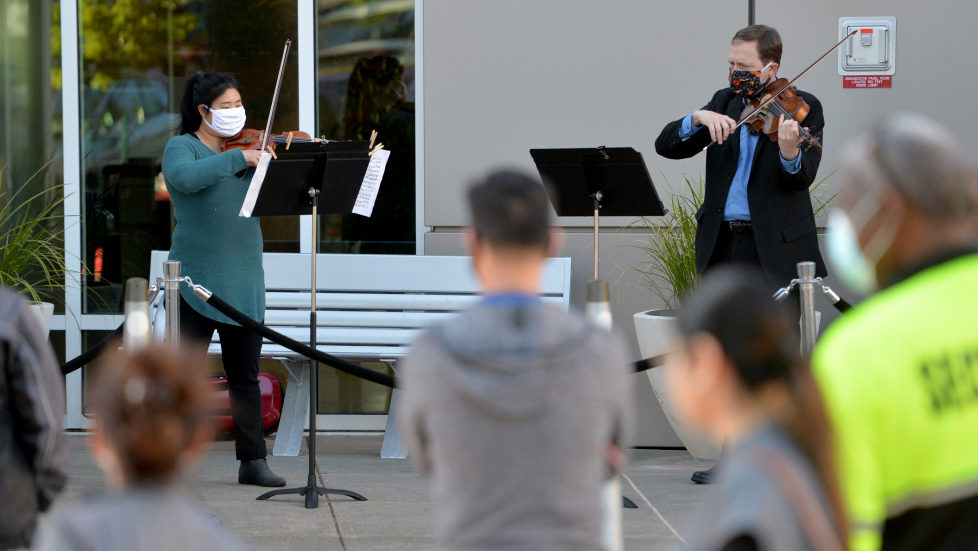
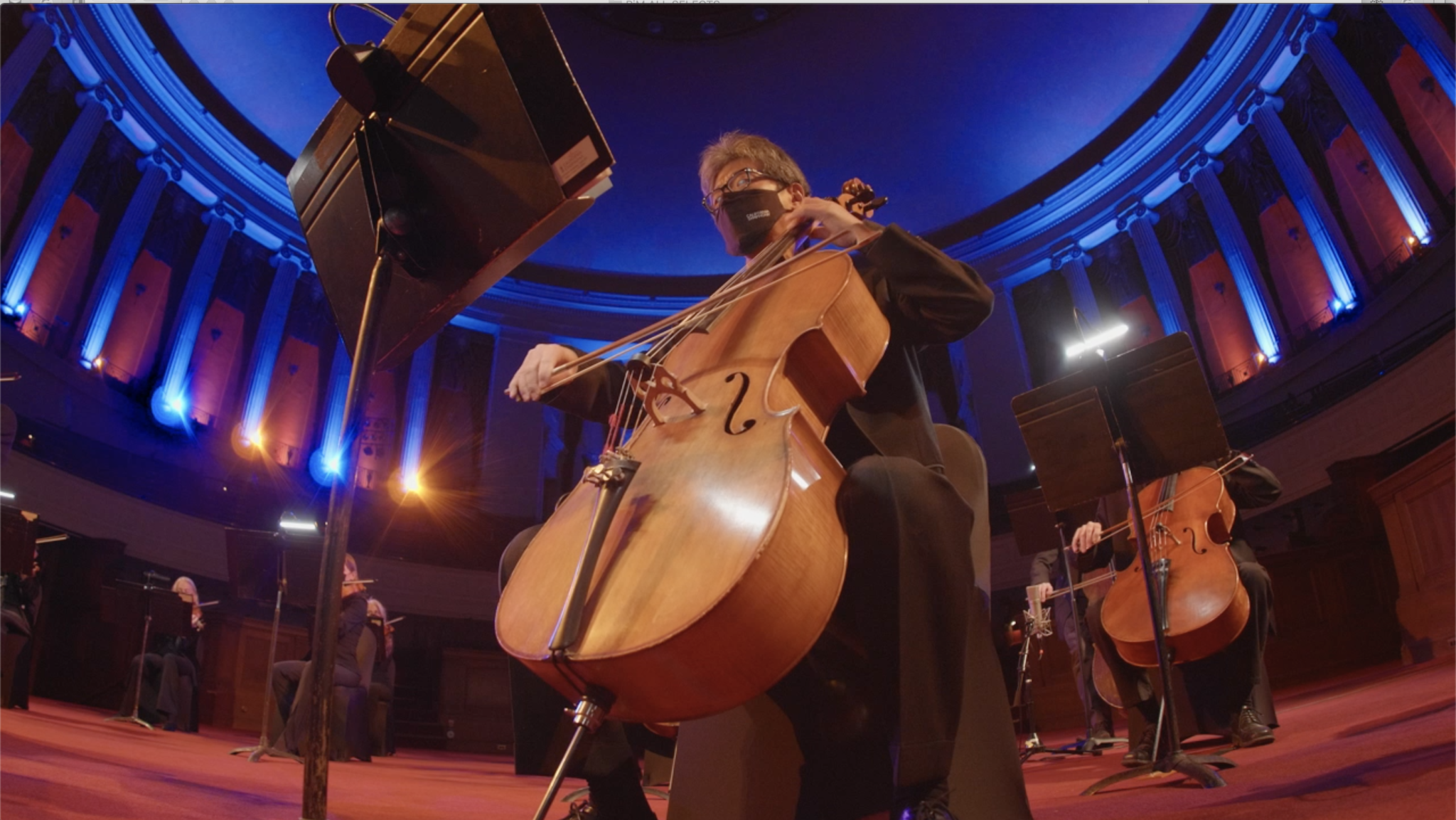
The California Symphony’s ALL THINGS STRINGS featuring our Fab Four quartet takes place Saturday, November 5 at 7:30 PM and Sunday, November 6 at 4 PM at the Lesher Center for the Arts. Tickets are $49 to $79. Buy tickets online or call or visit the Lesher Center Ticket Office at 925.943.7469, Wed – Sun, 12:00 noon to 6:00 pm.

